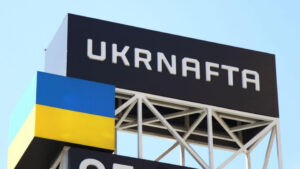
The Delta-Lotsman branch of the state enterprise Administration of Sea Ports of Ukraine announced on September 2 its intention to conclude a contract for property insurance with IC Guardian.
According to the system of electronic public procurement Prozorro, the expected cost was 1,282 UAH, the price offer of the company, the only participant in the tender 968.6 thousand UAH.
SE “Delta-Lotsman” was established by order of the Ministry of Transport of Ukraine in 1998 in order to improve the conditions for ensuring safety of navigation, protection of human life at sea and the environment, in the territorial sea of Ukraine in accordance with the requirements of international agreements and conventions, streamlining the structure of marine pilot services in the north-west.

After a weak end to 2024, permit activity picked up markedly in 2025. According to the State Statistics Office, the number of permits issued in April 2025 rose by 38.9% y/y in April, 80.4% y/y in May, and 15.1% y/y in June; while the expected value of properties in June was 47.1% higher than a year earlier. This forms the “substrate” for future project launches, primarily in the Skopje agglomeration.
New residential construction costs in Q2 2025 rose by 1.1% qoq, but were 0.3% lower yoy – the effect of normalization of material prices and a gradual cooling of costs after the 2022-2023 peak. Bottom line for construction: permits are accelerating, but the effect in the form of “commissioning” will manifest itself with a lag in 2025/26; production costs are stabilizing, which reduces pressure on developers’ budgets.
Rental: steady demand in Skopje; short-term segment active
Long-term rents in the capital are holding at elevated levels: benchmarks for Skopje in early September are around €300 for a studio, €400 for a 1-bedroom and €550 for a 2-bedroom apartment (based on average “asking” rates).
Sales and prices: indices accelerated
The house price index rose from 170.5 points in Q1 2025 to 184.1 points in Q2 2025. Back in March (Q1), annual price growth was ≈19.4% y/y, confirming an acceleration phase beyond 2023-2024 (data from aggregators based on NBRSM statistics).
Bottom line on sales/price: demand is focused on Skopje and quality locations; limited commissioning and cheaper financing in the Western Balkans region (on the background of moderate monetary policy) support prices in H2.
Outlook for the next 6-12 months
Prices: baseline scenario – moderate growth (shortage of new buildings + concentration of demand in Skopje), rates – below H1 peaks.
Rents: plateau at elevated levels in the center of Skopje; possible “sawtooth” in months due to seasonality and STR. Construction: “traffic jam” between permits and actual starts will persist until 2026; cost normalization reduces risks for new queues.
http://relocation.com.ua/north-macedonia-housing-price-analysis/

Ukrnafta JSC received a net profit of UAH 5.2 billion in January-June 2025, the company reported on Thursday.
“The company’s results are included in the condensed consolidated interim financial statements of Naftogaz of Ukraine JSC for the six months ended June 30, 2025,” the company said.
KPMG is conducting a review of these financial statements. As part of the audit, KPMG Audit carried out procedures to review Ukrnafta’s financial information.
“During the same period, Ukrnafta paid UAH 14.8 billion in taxes, fees, and customs duties to the state budget and transferred UAH 5 billion in dividends,” the company added.
As reported, Ukrnafta’s net profit for 2024 amounted to UAH 16.38 billion. At the same time, the company transferred UAH 5 billion in dividends to the state budget based on its performance in 2024.
Ukrnafta is Ukraine’s largest oil producer and operator of the national network of gas stations. In March 2024, it took over the management of Glusco’s assets and currently operates 545 gas stations.
The company holds 92 special permits for industrial development of deposits. It has 1,832 oil and 154 gas production wells on its balance sheet.
The largest shareholder of Ukrnafta is Naftogaz of Ukraine with a 50%+1 share. In November 2022, the Supreme Commander-in-Chief of the Armed Forces of Ukraine decided to transfer the company’s corporate rights, which belonged to private owners, to the state, and they are currently managed by the Ministry of Defense.
Ukrnafta’s net profit for 2024 was UAH 16.38 billion.

The total volume of the electric vehicle segment (new and used cars, trucks and buses) in August 2025 amounted to 11.5 thousand, which is 12.5% more than in July this year, and 22.5% more relative to the indicators of August-2024, according to the Institute of Auto Market Research.
“11.545 thousand electric cars cumulatively is a historical volume record for our market, and the main drivers here are three: the rise in fuel prices at gas stations, the general trend of growing interest in electric cars (which consists of improving their performance and reducing market prices), as well as the approaching customs clearance with VAT, which is scheduled for January 1, 2026,” – said in a statement on the website of analysts.
It is noted that the last of these factors is probably now most actively encouraging motorists to switch to electric cars, because in just a few months they will rise in price by almost a third.
According to analysts, the growth of volumes in this segment will continue in the future because of the approaching return of VAT on the customs clearance of electric cars, and from next year we should expect some pause, a subsidence lasting several months, after which there will be a certain stabilization, which will be replaced by a trend of growth in volumes.
“At this rate, next month the total replenishment of the BEV fleet will exceed last year’s volumes, while this will happen in less than 9 months,” experts believe.
In the structure of this segment in August, the basis is made up of imported electric vehicles with mileage, the share of such 52.1%, or 6018 pcs. – This is 9.5% more than in August 2024.
The second largest sub-segment is domestic resales with a share of 30.8%, and the number of 3,561 pcs. – 31.1% more.
New electric cars took 17% (1,966 units), up 62.6%, and a new record for new electric cars.
Analysts note that as of the end of July this year, the fleet of BEV Group vehicles in Ukraine (excluding industrial electric cars, trolleybuses and rail cars) amounts to 185 thousand units.
Most of them are passenger cars – 181 thousand, electric trucks – 3.9 thousand, there are also several electric buses (8 pcs.). In addition, about 1.1 thousand units of various motorized vehicles are registered.
“Interestingly, the most in our fleet of electric vehicles Tesla – 20%, although from the beginning of ”electromobilization” and until recently the leader was Nissan, whose share is now 18.9%. The third in this list is Volkswagen with a share of 12.6%.

Ukrainian cheese makers traditionally expect sales to pick up in the fall, but in 2025 they plan to raise prices by an estimated 5%, which has led to an increase in sales in the cheapest segment—cheese products, according to the industry analytical agency Infagro.
“This year, seasonal hopes may be dashed by the price situation: against the backdrop of cheaper cheese in the EU (down 8% in August), domestic producers, on the contrary, plan to raise prices by approximately 5%. The rise in the price of Ukrainian cheese is already having an impact: imports are growing, and cheese products are increasingly occupying store shelves—a cheaper alternative that is rapidly gaining popularity among consumers,” analysts noted.
Experts emphasized that due to its lower cost, cheese products are currently showing the most dynamic sales growth. For many buyers, these products are becoming the only affordable option amid the constant rise in the price of “real” cheese.
“In such conditions, cheese makers are forced to share the market not only with imports, but also with domestic competitors who are betting on a more affordable format. The trend of growing consumption of cheese products is expected to continue,” Infagro concluded.

The Kryvyi Rih Mining and Metallurgical Plant PJSC ArcelorMittal Kryvyi Rih (AMKR, Dnipropetrovsk region) intends to reconstruct the coke chemical production (CCP) capture workshop complex – the ammonia-sulfate department.
According to materials available to the Interfax-Ukraine agency, the planned activities include the reconstruction of the CCP capture workshop complex, which involves both the construction of new buildings and the phased complete replacement of external equipment located outside the buildings with new equipment.
It is specified that the technical solutions ensure the preservation of the existing technology for purifying coke oven gas from ammonia using a non-saturator method with a sulfuric acid solution to obtain ammonium sulfate, which is a commercial product.
The purpose of the reconstruction is to replace outdated and worn-out equipment with modern equipment, improve equipment productivity, and improve working conditions for workers. The planned activities will ensure the preservation of jobs for the enterprise’s workers.
The reconstruction project is planned to be implemented in three stages, with dismantling, phased construction of facilities, and relocation of engineering networks under operating conditions. The total built-up area of the facility is approximately 6,500 square meters.
The main technical and economic indicators of the planned activities after the reconstruction of the workshop are as follows: productivity of the ammonia-sulfate department for coke oven gas – 130,000-140,000 cubic meters/hour / 1,138,800-1,226,400 thousand square meters/year; volume of coke oven gas purified from ammonia – 130,000-140,000 cubic meters/hour / 1,138,800-1,226,400 thousand cubic meters/year; ammonium sulfate production volume – 6,772 tons/hour / 59,322.72 tons/year; heavy capture resin volume ~80 tons/month / ~960 tons/year.
The existing recirculation cycle of the capture workshop will be used to meet the recirculating water supply needs of the new ammonia-sulfate department.
ArcelorMittal Kryvyi Rih is the largest producer of hot-rolled steel in Ukraine. It specializes in the production of long products, in particular, reinforcement bars and wire rod. The company has a full production cycle, with a production capacity of over 6 million tons of steel, more than 5 million tons of rolled products, and over 5.5 million tons of pig iron per year.
ArcelorMittal owns Ukraine’s largest mining and metallurgical complex, ArcelorMittal Kryvyi Rih, and a number of small companies, including ArcelorMittal Beryslav.